Running a business means managing people, and managing people means managing schedules. Whether you run a restaurant, retail team, healthcare practice, agency, or factory, scheduling chaos kills productivity and morale. Enter: employee scheduling software and best employee scheduling apps — the backbone of organized shift planning, time tracking, and payroll prep.
Here’s your full guide to the best employee scheduling tools, including staff schedule software, free options, AI schedulers, tools with payroll sync, and the top-rated apps for small businesses, startups, and enterprise.
🔧 TL;DR: Top Picks
| 📋 Software | Best for | Free plan | Payroll integration | Industry-fit |
|---|---|---|---|---|
| Shifts by Everhour | Best overall for SMBs & remote teams | ✅ | ✅ (via integrations) | Agency, remote, tech |
| Homebase | Hourly shift-based businesses | ✅ | ✅ | Restaurant, retail |
| Deputy | Compliance-heavy scheduling | ❌ | ✅ | Healthcare, enterprise |
| 7shifts | Restaurant scheduling and labor tracking | ✅ | ✅ | Hospitality |
| When I Work | Shift alerts + team messaging | ✅ | ✅ | Field service, service jobs |
| Connecteam | All-in-one mobile workforce management | ✅ | ✅ | Construction, manufacturing |
| ZoomShift | Simple UI for startups and contractors | ✅ | ❌ | Small business |
| Shiftboard | Complex workforce ops | ❌ | ✅ | Enterprise-level ops |
If you search the web, you’ll find hundreds of the best online scheduling software for workforce management. To save you time and effort going through dozens and dozens of options, below, we have reviewed 10 of our biggest favorites.
❗ Why Shifts by Everhour Is the Top Pick
Shifts by Everhour is more than just a scheduling tool. Shifts helps small teams stay coordinated, compliant, and efficient—without extra admin overhead. Its key features include:
- 🔄 Smart scheduling: Drag-and-drop builder for shifts, plus time tracking and attendance in one place.
- 💸 Payroll-ready reports: Track labor costs, overtime, and sync with tools like Gusto or QuickBooks.
- 🧾 Time off made easy: Handle PTO requests and approvals with a tap.
- 📱 Mobile-first access: Let team members check schedules, request time off, and pick up open shifts on the go.
- 💬 Built-in chat: Message individuals or groups to keep everyone informed.
- 🕒 On-site clock-ins: Use kiosk mode for fast and secure clock-ins from a shared device.
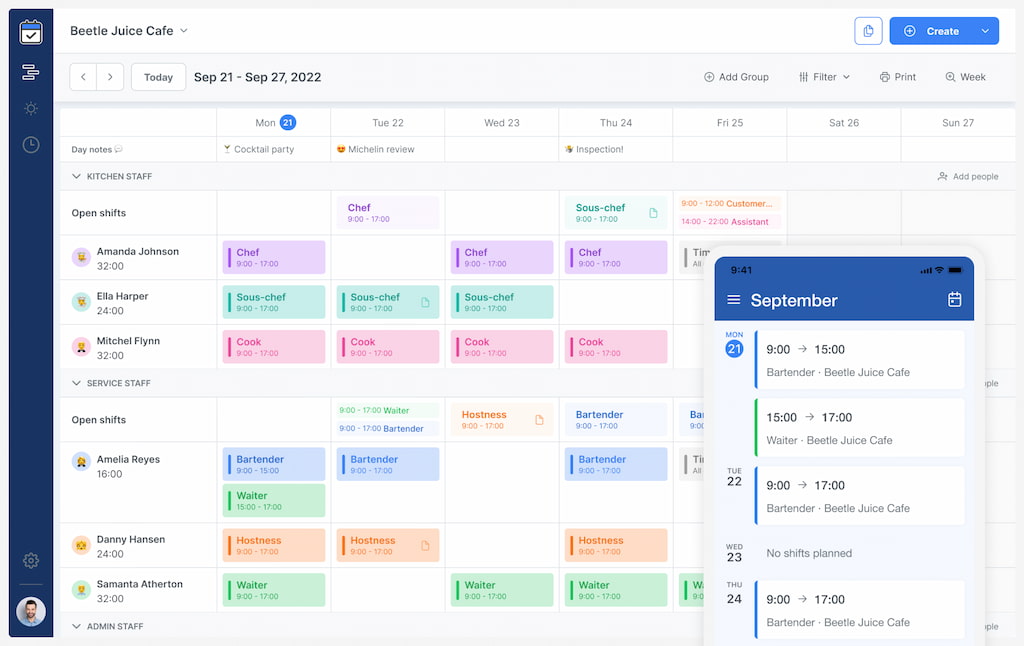
Best for remote, hybrid, and hourly teams who want less manual tracking and more visibility.
🆓 Best Free Employee Scheduling Software
- Shifts by Everhour (Free Plan) – Includes shift templates, team availability, and mobile support
- Homebase – Free for 1 location, includes scheduling and timesheets
- Connecteam – Mobile-first and generous free tier
- ZoomShift – Clean UI and basic shift scheduling for contractors
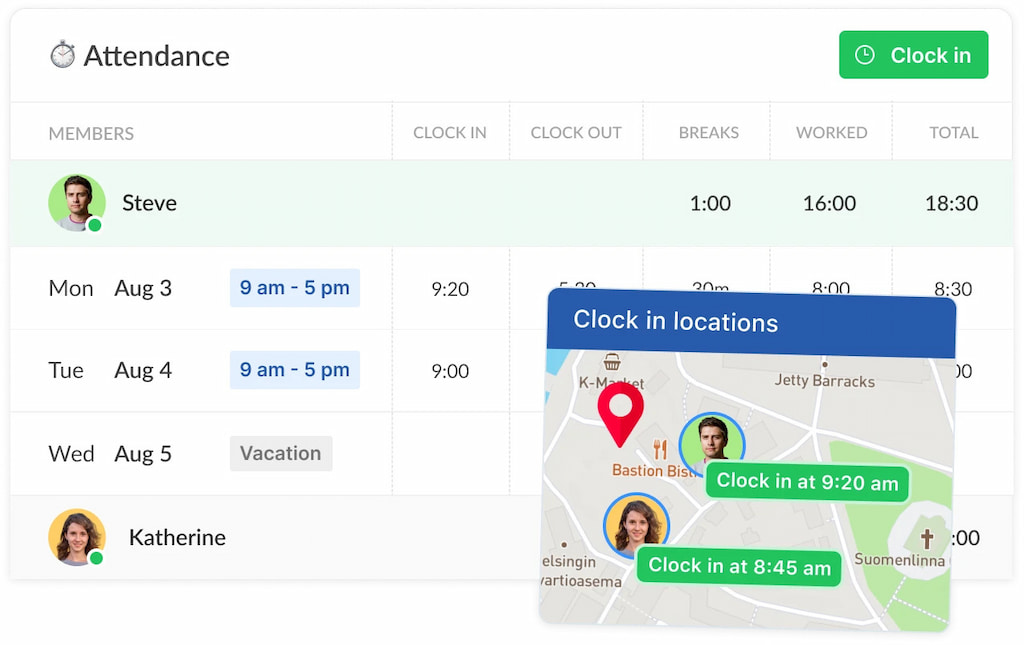
💸 Best Scheduling Software with Payroll Integration
If you want to skip exporting CSVs every payday:
- Shifts by Everhour – Connects with most payroll tools natively
- Homebase – Payroll and scheduling in one interface
- Deputy – Built for compliance and syncs with Gusto, ADP
- When I Work – Offers payroll sync but requires paid plans
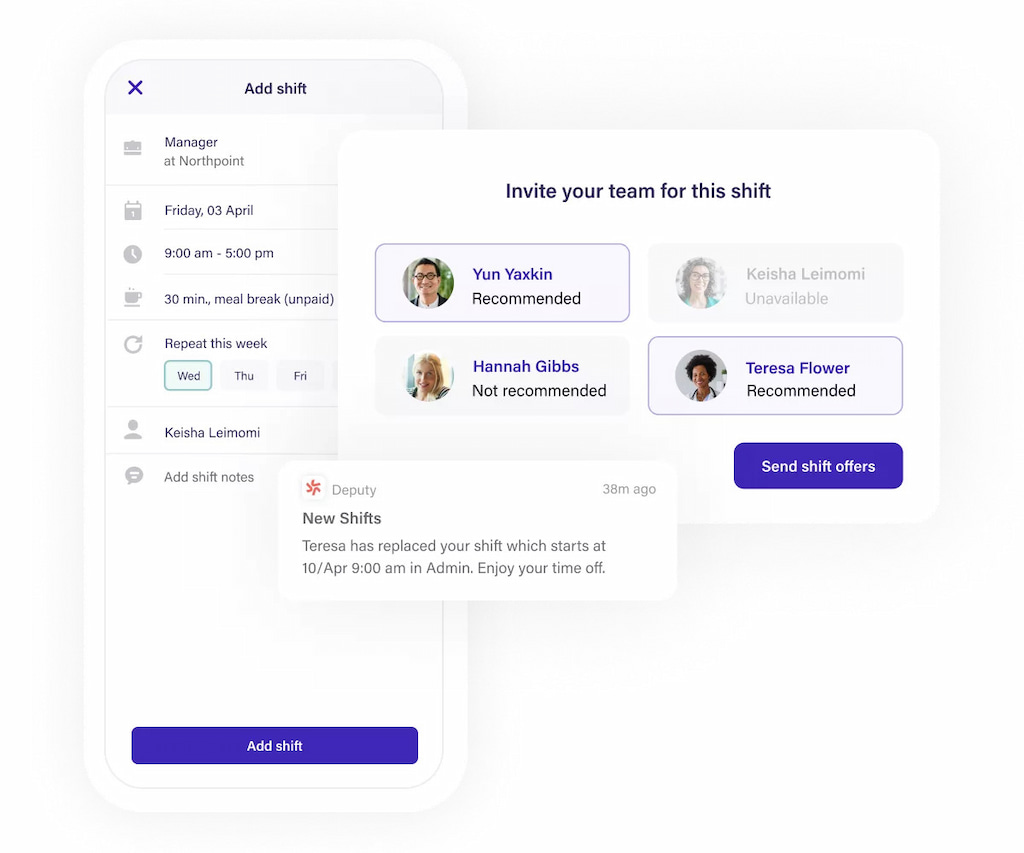
🤖 Best AI-Powered or Automated Employee Scheduling Tools
- Deputy – Smart shift-filling + overtime alerts
- Connecteam – Automated scheduling templates and task assignments
- Shifts by Everhour – Forecasts budgets and hours by project, great scheduling and time tracking software
- 7shifts – Predictive scheduling based on trends and role types
👷♂️ Best for Construction, Field, and Industrial Workforces
- Connecteam – Field-based punch-ins, shift updates, job checklists
- Homebase – Good for crews based at one or two locations
- When I Work – Useful for dispatching shifts on the fly
![the 9 best when i work alternatives in 2023 [both paid and free]](https://blog-cdn.everhour.com/blog/wp-content/uploads/2023/01/connecteam.jpg)
If offline access or GPS logs are needed, Connecteam is your tool.
💪 Best for Small Businesses
- Shifts by Everhour – Scales from 5 to 200 employees, great for hybrid teams
- ZoomShift – Simple and no-frills
- Homebase – Free for 1 location, flexible for storefronts
![the 9 best when i work alternatives in 2023 [both paid and free]](https://blog-cdn.everhour.com/blog/wp-content/uploads/2023/01/zoomshift.jpg)
💡 Best for Startups
- Shifts by Everhour – Integrates with tools startups already use
- ZoomShift – Lightweight and fast to onboard
- Connecteam – Strong for mobile-first, no-desk teams
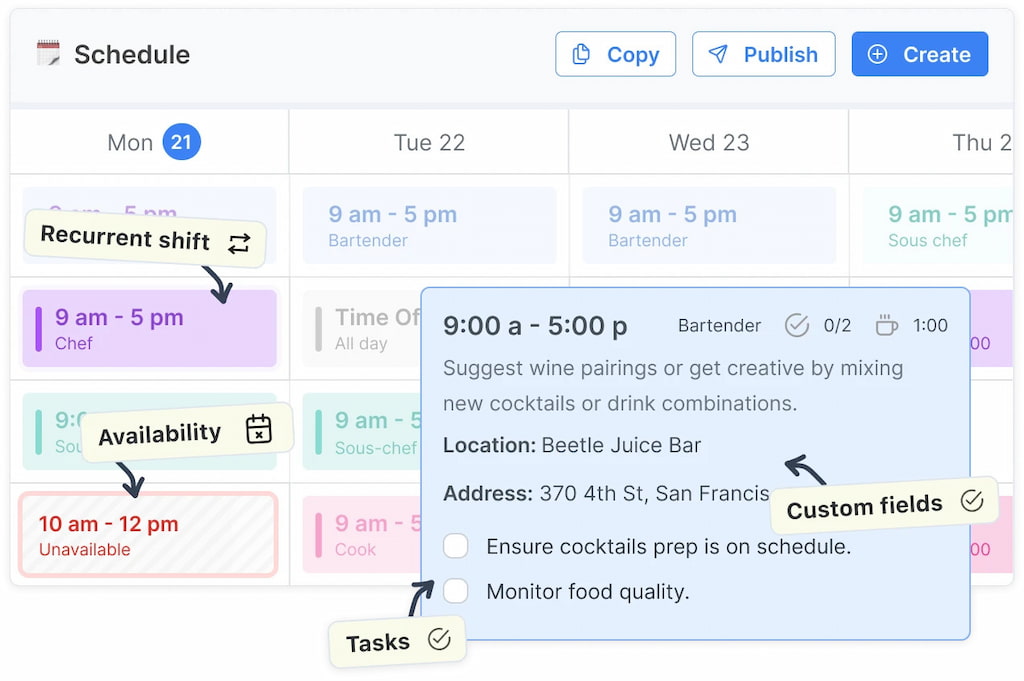
Startups need agility and fast onboarding — these tools skip the fluff.
👩⚕️ Best Employee Scheduling Software for Healthcare
- Deputy – Made for multi-role, multi-location staff with compliance needs
- Homebase – Simple tracking for clinics
- Shiftboard – Advanced, built for hospital systems
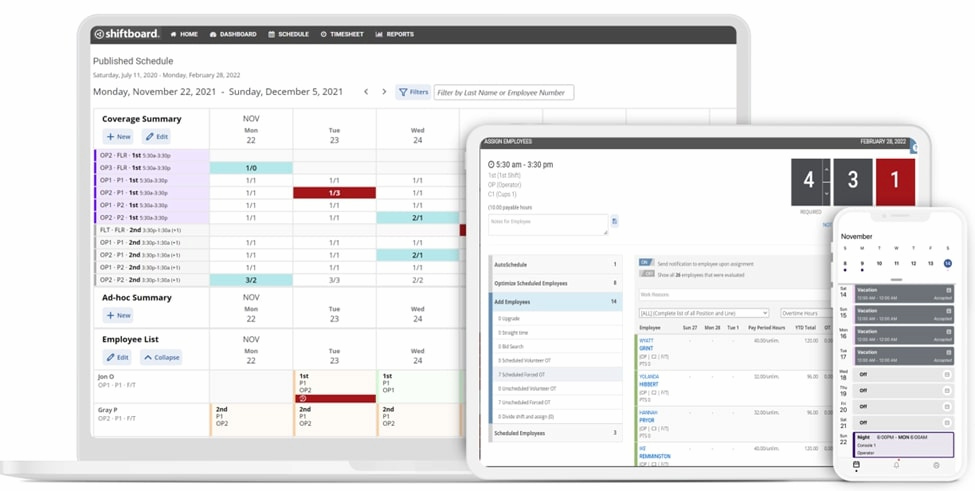
🍽️ Best for Restaurants and Hospitality
- 7shifts – Built just for restaurants
- Homebase – Shift tracking + tip reporting
- When I Work – Strong for hourly front-of-house staff
![the 9 best when i work alternatives in 2023 [both paid and free]](https://blog-cdn.everhour.com/blog/wp-content/uploads/2023/01/7shifts.jpg)
Check out our breakdown of Homebase vs When I Work!
🏗️ Best Construction Employee Scheduling Software
- Connecteam – GPS, task checklists, safety forms
- Clockify + Trello – DIY option with punch-ins + project boards
🏢 Best for Medium and Enterprise
- Deputy – Built to handle compliance + labor forecasting
- Shiftboard – Workforce automation + credential tracking
❓ FAQs
1. What is the best employee scheduling software?
Shifts by Everhour for small to midsize businesses that care about reporting, ease-of-use, and remote functionality.
2. What’s the best free employee scheduling software?
Homebase or Shifts by Everhour (free plans). Both are the best shift schedule makers and offer strong mobile support and time tracking.
3. What’s best for retail or restaurants?
7shifts or Homebase. Both are purpose-built for shift work and labor cost control.
4. Which tool integrates best with payroll software?
Everhour, Deputy scheduling app, and Homebase have the most seamless integrations.
5. Can I use these tools for shift planning and project tracking?
Yes. Shifts by Everhour shines here by integrating with ClickUp, Trello, and Asana.
🔎 Bottom Line
Whether you’re running a 5-person design agency or a 500-person warehouse team, your scheduling software should simplify your life — not add another spreadsheet to maintain.
Start with Shifts by Everhour if you want time tracking, scheduling, and payroll support in one clean interface. Scale it as your team grows — and stop wasting hours managing hours.
If you want more industry-specific scheduling options, check out our list of the best security guard scheduling software or the best healthcare scheduling software systems!

